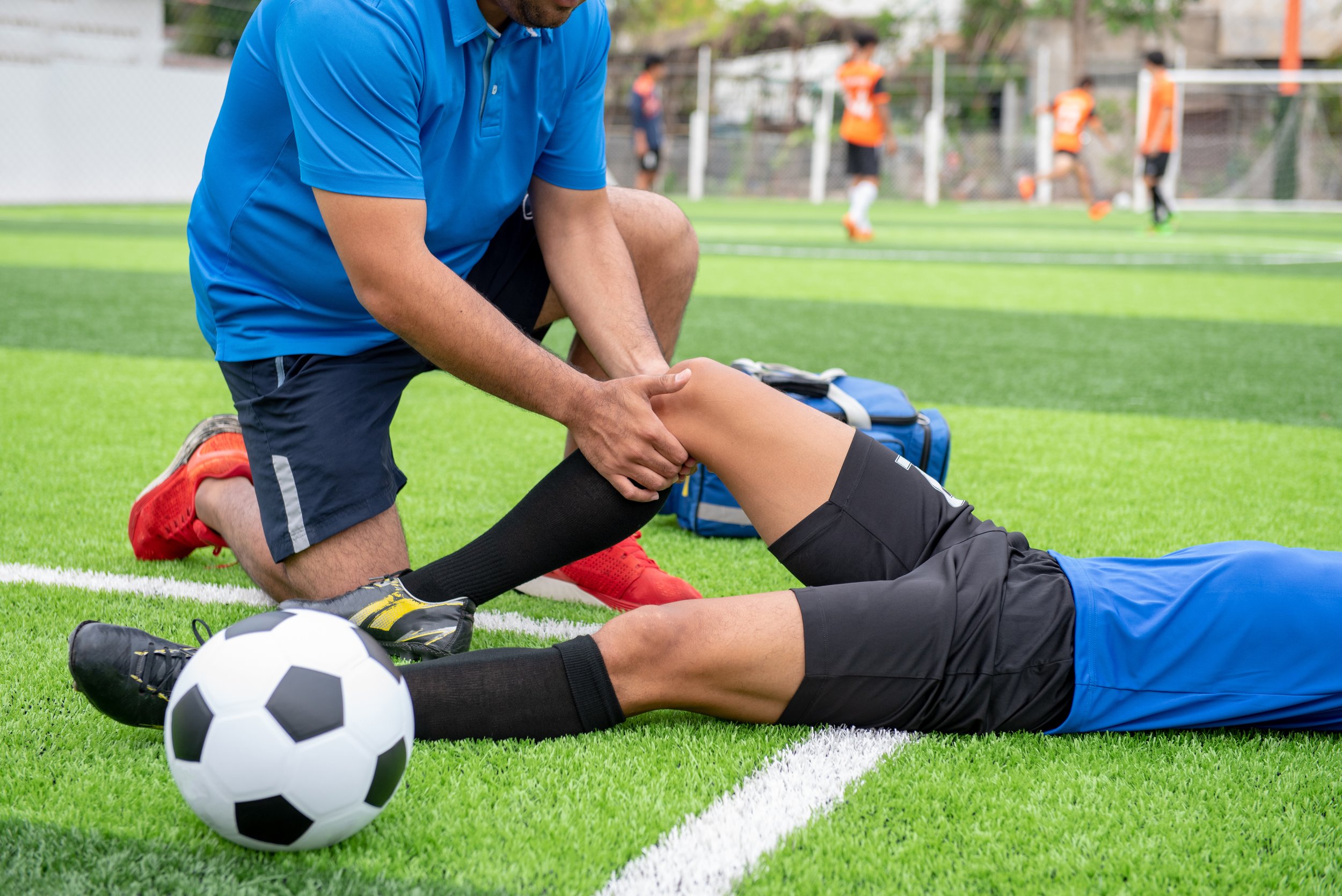Summer Sports Injuries
Be vigilant about safety
By Neil Danial Jaddou, M.D and Vojtech Parizek, M.D.
Every year, millions of people are treated due to sports injuries, especially in the summer. As a family doctor trying to keep my patients as healthy as possible, I have witnessed the severe consequences sports injuries may have. Fortunately, there are reliable ways we can prevent them. In the following interview, my extern, Dr. Vojtech Parizek, answers questions about the prevention of sport injuries.
Dr. Jaddou: What injuries are considered sports injuries?
Dr. Parizek: By the term “sports injuries”, doctors mean such injuries that are usually caused during various sports. However, you can also get a “sports injury” while participating in a non-sporty activity, such as gardening.
Sports injuries can be divided into two major groups: acute and chronic. Acute sports injuries happen immediately, like concussion after a fall. Chronic injuries need some time to develop, such as stress fractures.
Dr. Jaddou: Are there any other types of sports injuries besides the above-mentioned fractures and concussions?
Dr. Parizek: There are many. In addition to fractures and concussions, there are, for example, dislocations, sprains, strains, or tendinitis. Dislocations happen when bones that form a joint are separated. Sprains are damage to the connective tissue that join one bone with another while strains are damage to the muscles or tendons. Tendinitis is an inflammation of a tendon.
Dr. Jaddou: Can you mention any common examples of sports injuries?
Dr. Parizek: Starting with the most critical part of the body, concussion is a common injury of the head. It is caused by a blow to the head, which makes the brain shake. Its symptoms can include headache, dizziness, confusion, and vomiting.
Another common group is injuries to the big joints of the arm, shoulder, and elbow. Shoulder injuries include rotator cuff injuries or shoulder instability. A rotator cuff is a group of muscles that stabilize the shoulder joint. Its injuries tend to happen in people who repeatedly reach upward like tennis players or swimmers. Examples of elbow injuries are tennis elbow or golfer’s elbow. Tennis elbow is located on the outside of the elbow, while golfer’s elbow causes pain in the inner part.
The leg is another major location of sports injuries. A hamstring strain causes pain in the back of your thigh, often seen in basketball, football, and soccer. The knee is injured very often. A torn knee ligament is typical for athletes who change directions suddenly or land from a jump. Meniscal cartilage tear can be a consequence of a complete tear of the knee ligaments. Last but not least, ankle sprain is common when playing volleyball, soccer, or basketball.
Dr. Jaddou: How can someone prevent sports injuries?
Dr. Parizek: There are many ways you can prevent sports injuries. Avoid sports that involve heavy collisions, use quality safety equipment, warm up with stretching before every workout, and cool down with stretching after every workout. Drink plenty of water to help prevent headaches or heatstroke. Most importantly, patients should pay attention to their bodies and progress step-by-step without straining to reach their goals too quickly. Finally, play sport based on your ability. For example, if you are in your 60s don’t play sport or do activities the same way you were when you were in your twenties or thirties.
Dr. Jaddou: When should patients see a doctor due to their sports injury?
Dr. Parizek: When things don’t get better or when in doubt, then you should not wait to see a doctor. Serious injuries are usually those that cause severe pain, create an obvious deformity, or are not getting better after a few days. If an injury is minor, they should try the RICE method: rest, ice, compression, and elevation.
Dr. Jaddou: I have a lot of patients who have osteoporosis. Do you have any advice related to sports injuries for them?
Dr. Parizek: Osteoporotic patients should focus on osteoporosis prevention in general, as stronger bones will help them prevent injuries. They should stop smoking, limit alcohol consumption, increase physical activity, and get other medical conditions under control to eliminate other risk factors for osteoporosis.
It is also recommended that patients increase their calcium and vitamin D levels. Patients can get calcium from dairy products, spinach, broccoli, or from foods with added calcium, like orange juice and other sources. Vitamin D can be obtained from sun exposure (be careful not to sunburn!) or from many types of fish, egg yolk, vitamin D-fortified foods, and others.
If patients have or think they may have osteoporosis, they should limit their fall risk by not doing any jumping moves, checking the list of their medications with a doctor (as some of them can cause dizziness), and placing railings and non-slip carpets at home, among other safety measures.
Dr. Jaddou: You mentioned vitamin D. Are there any other benefits to supplementing?
Dr. Parizek: There are many. Vitamin D is an interesting substance that is both a vitamin and a hormone at once. Its character supports immune health, muscle function, and brain cell activity. It gives you energy and decreases muscle pain and depression.
Dr. Jaddou: Is there anything else you would like to tell patients?
Dr. Parizek: I would like to tell them that prevention really works and that the health benefits of sports strongly outweigh their risks. I also think that having a solid primary care physician who will not hesitate to guide them through a potential treatment plan in case of injury is extremely important.
Dr. Neil Jaddou is a professor of Family Medicine and Community Health at both Wayne State and Oakland Beaumont Medical School. He also sees patients at Somerset Family Medicine (SFM) in Troy and Sterling Heights, Michigan. More information can be found at www.drjaddou.com. Dr. Vojtech Parizek is an aspiring family physician from the Czech Republic and is doing his rotation at SFM.

